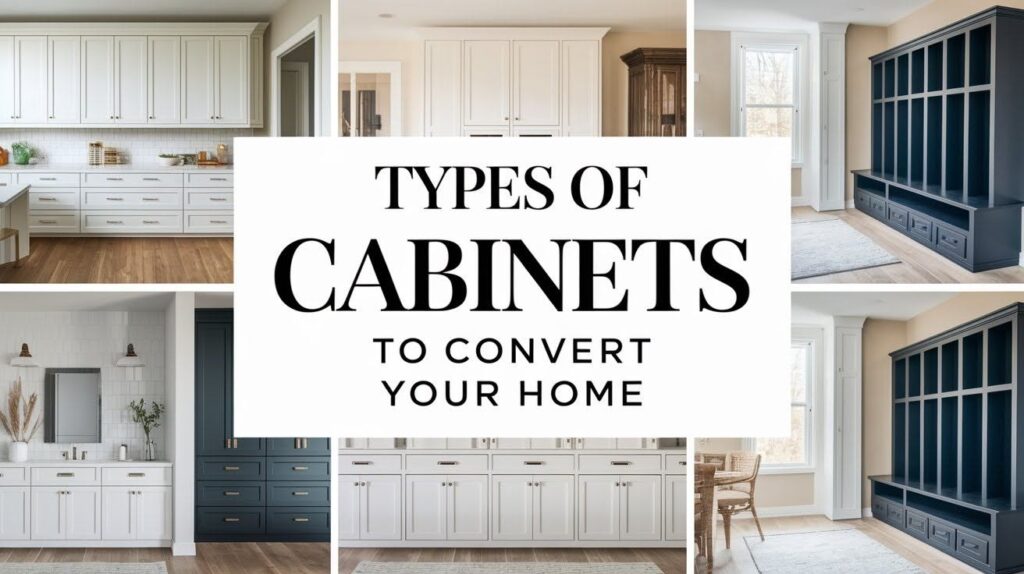Cabinets serve as more than simple storage solutions – they fundamentally shape the appearance, functionality, and flow of your entire home.
When remodeling your kitchen, bathroom, or laundry room, selecting the appropriate cabinet types can create a dramatic difference in both form and function.
The right choice impacts how you use your space daily, from meal preparation to morning routines.
Understanding the various options available helps you make informed decisions that align with your lifestyle and design preferences.
This comprehensive guide examines 11 essential cabinet types, organized by form, function, and style considerations.
These insights will empower you to plan and create your ideal living space with confidence and clarity.
List of Types of Cabinets to Convert Your Home
A comprehensive overview of 11 essential cabinet styles and configurations that can completely change your home’s storage capacity and visual appeal.
1. Base Cabinets
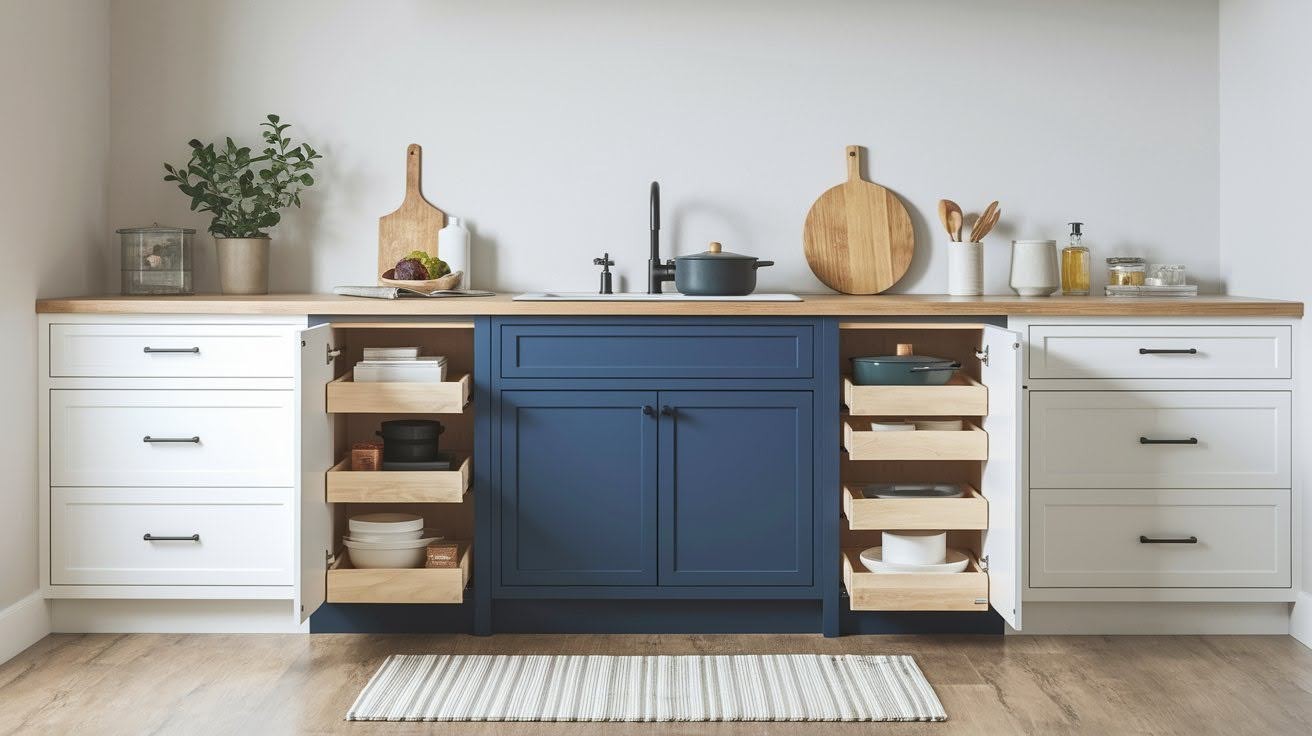
Base cabinets install directly on the floor and provide essential support for countertops, sinks, and cooktops.
These fundamental units form the backbone of any kitchen or bathroom layout.
Most base cabinets feature drawers or doors that offer convenient access to pots, pans, and everyday essentials.
Their sturdy construction handles the weight of heavy appliances and stone countertops while maintaining structural integrity.
Standard heights typically measure 34.5 inches, accommodating most countertop materials.
The interior configuration can vary from simple shelving to complex drawer systems with soft-close mechanisms.
2. Wall Cabinets
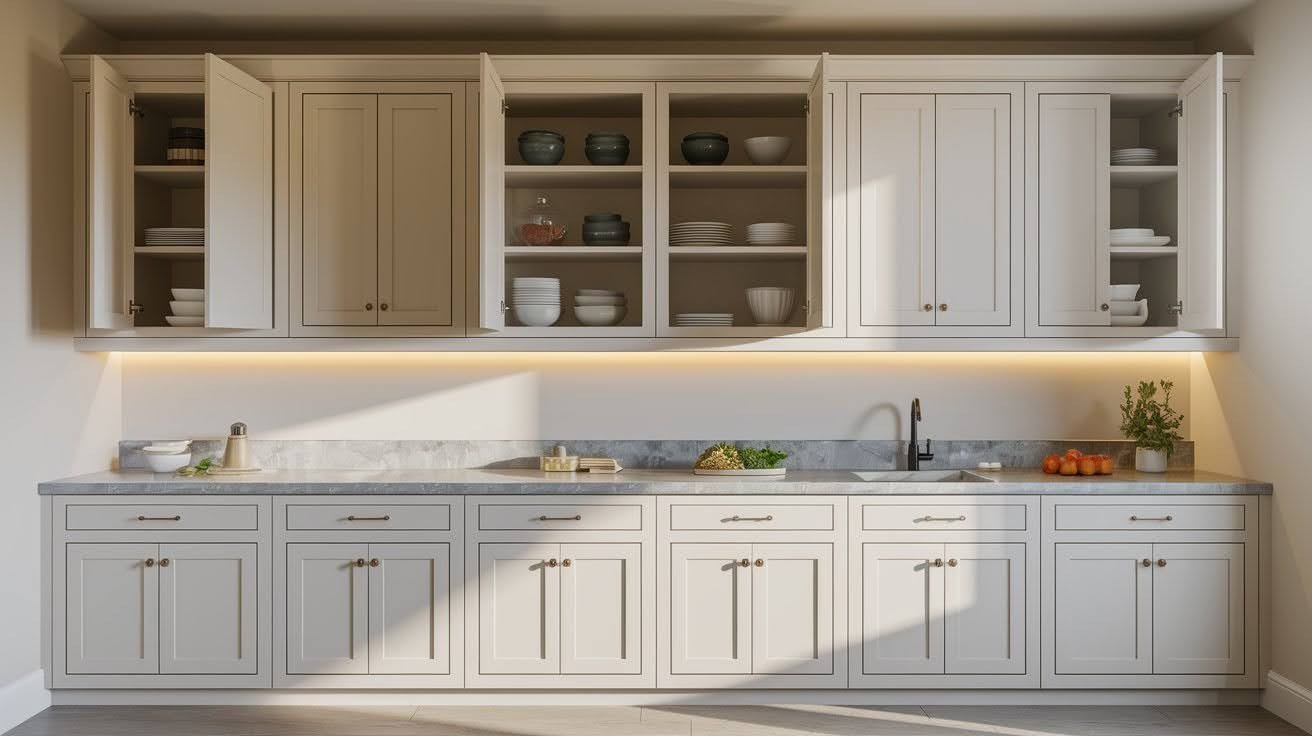
Wall cabinets mount securely to wall studs and provide valuable storage for dishes, spices, and decorative items.
These space-saving solutions keep frequently used items within easy reach while maintaining clean floor lines.
Installation options include extending to the ceiling for maximum storage or leaving space above for decorative lighting fixtures.
Wall cabinets work particularly well in smaller kitchens where floor space is limited. Their positioning allows for under-cabinet lighting that illuminates work surfaces below.
3. Tall Cabinets
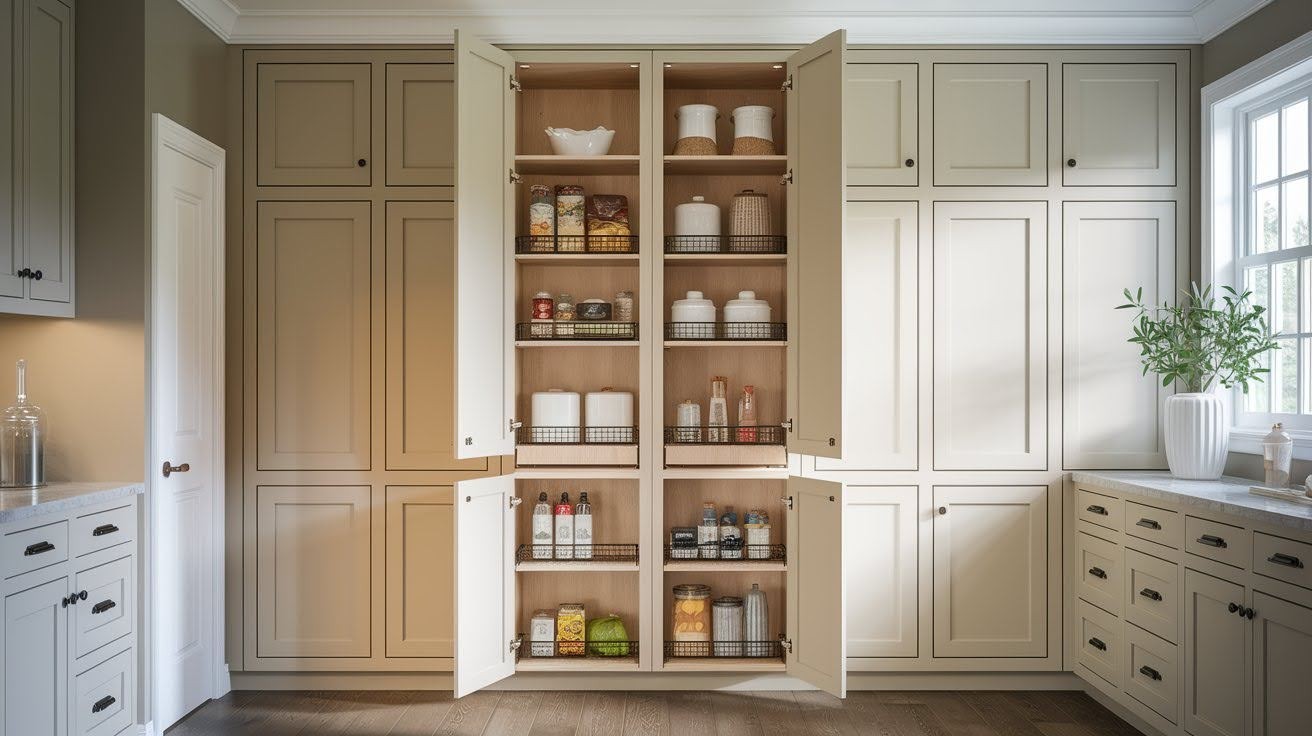
Tall cabinets, also known as pantry or utility cabinets, maximize vertical space with heights ranging from 84 to 96 inches.
These commanding storage units handle bulk food items, cleaning supplies, and built-in appliances with ease.
Their generous capacity makes them ideal for families or avid cooks who need extensive storage options.
Many tall cabinets feature adjustable shelving systems that adapt to changing storage needs. Pull-out drawers and lazy Susans can enhance accessibility in these deeper units.
4. Specialty Cabinets
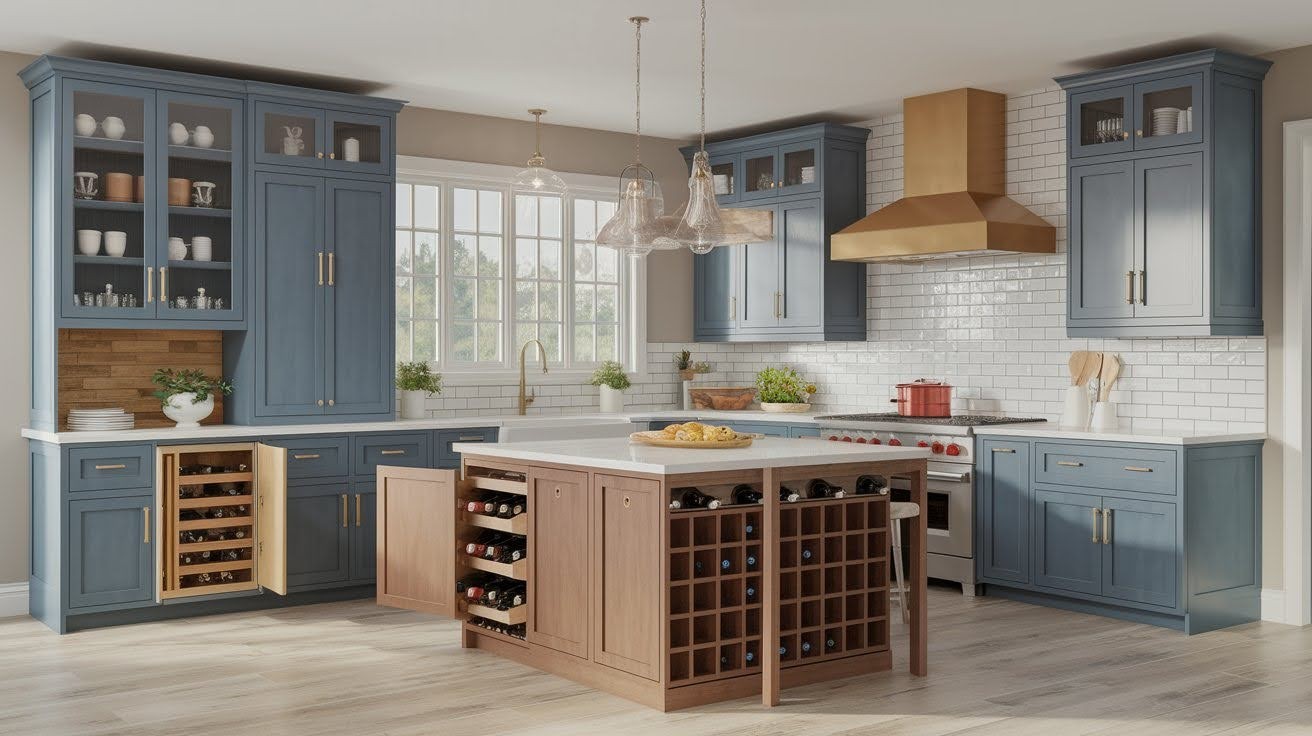
Specialty cabinets include corner units, hutches, bottle racks, and appliance garages that address specific storage challenges.
These innovative solutions often require custom design to maximize storage while eliminating wasted space.
Corner cabinets might feature rotating shelves or pull-out drawers that make awkward spaces functional.
Appliance garages hide small kitchen devices while keeping them easily accessible.
Wine storage units and spice racks represent other specialized options that enhance kitchen organization.
5. Shaker Cabinets
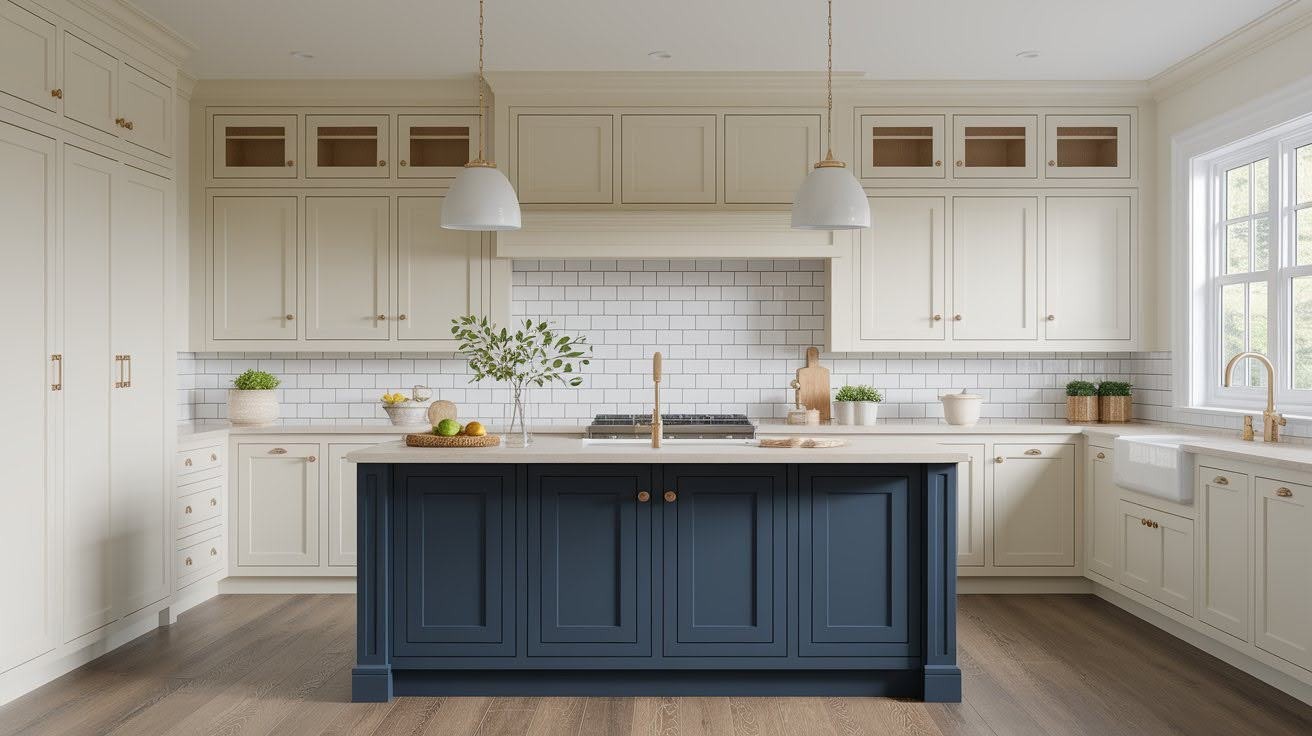
Shaker cabinets feature clean lines and recessed panels that create timeless appeal across multiple design styles.
This classic American design works seamlessly in modern, transitional, and traditional kitchens.
The simple five-piece door construction emphasizes quality craftsmanship without excessive ornamentation.
Shaker style adapts well to various wood species and painted finishes. Their understated design ensures they won’t look outdated as trends change over time.
6. Slab (Flat Panel) Cabinets
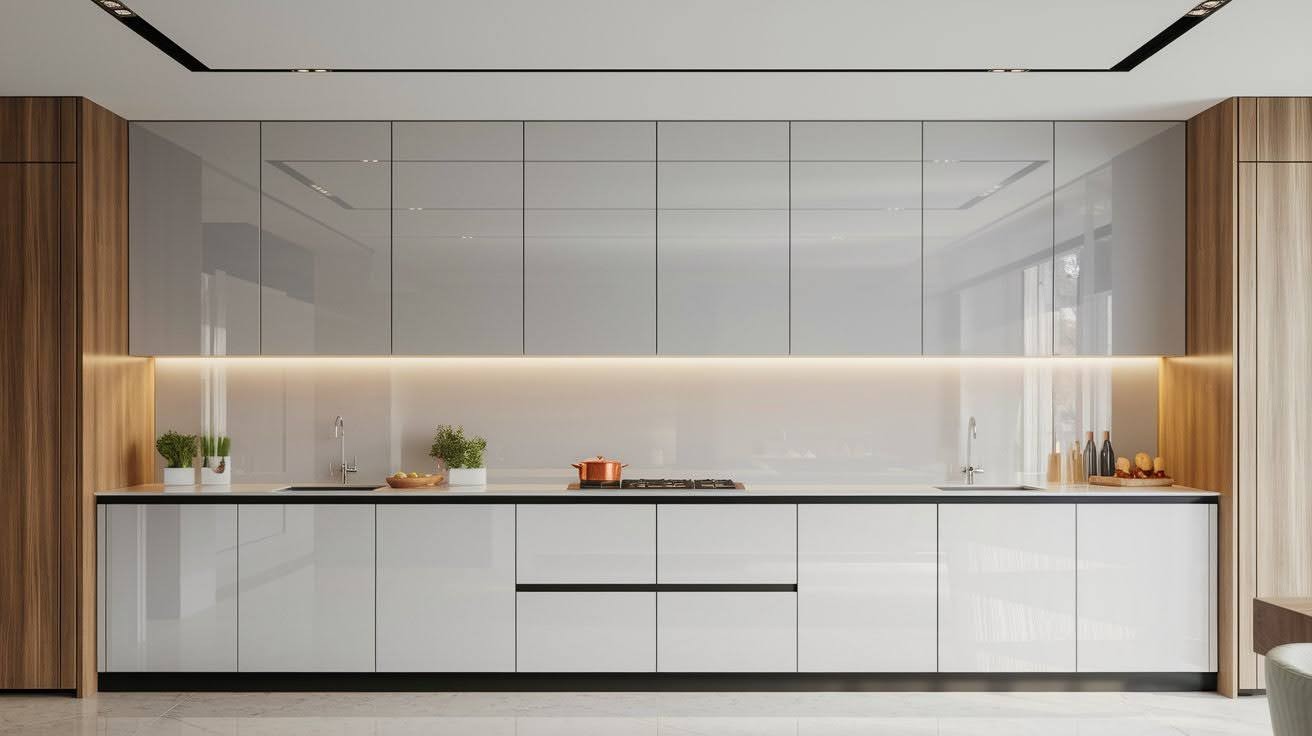
Slab cabinets feature smooth, unframed doors that create a modern or contemporary look.
These minimalist designs often pair with high-gloss finishes or natural wood veneers for dramatic effect.
The absence of raised panels or decorative elements emphasizes clean geometry and uncluttered surfaces.
Slab doors work particularly well in open-concept homes where simplicity enhances the overall flow.
Handle-less options with push-to-open mechanisms further enhance the streamlined appearance.
7. Raised Panel Cabinets
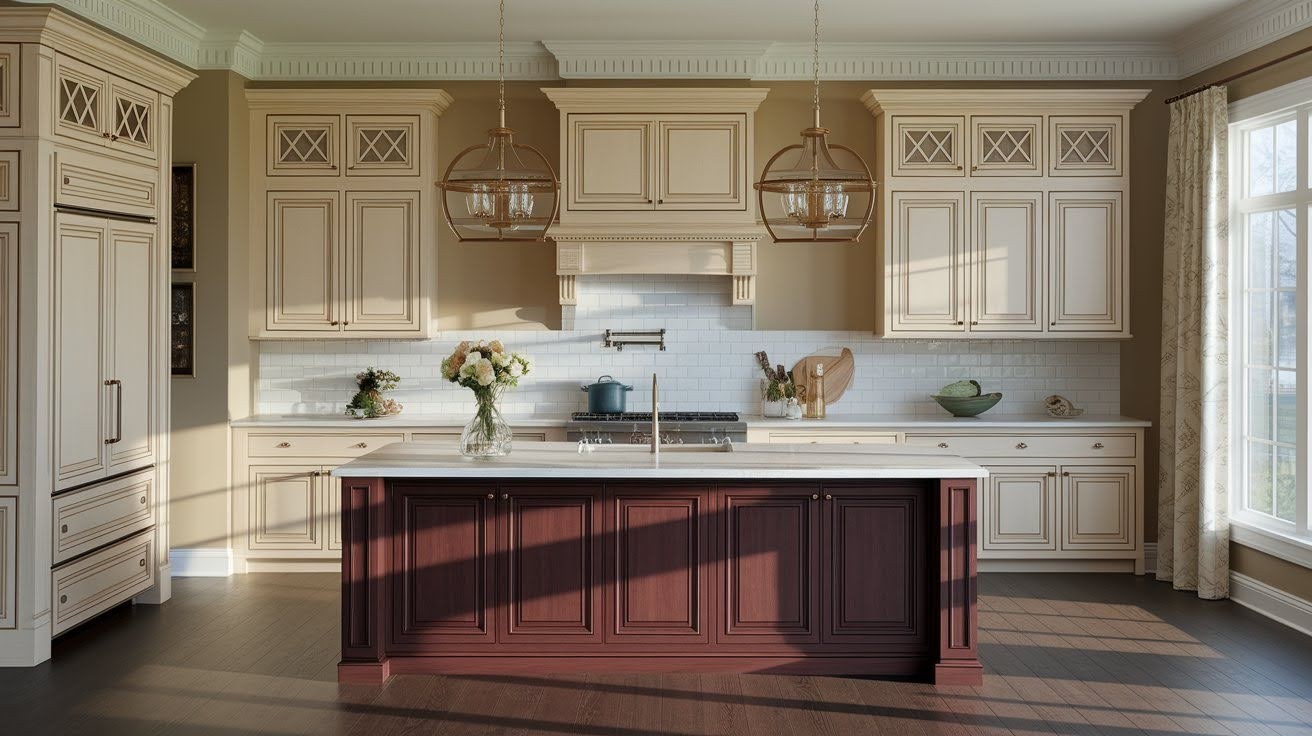
Raised panel cabinets feature an elevated center panel that adds visual depth and traditional character.
This classic design suits formal dining rooms and traditional kitchen settings. The dimensional quality creates interesting shadow lines that change throughout the day.
Various panel profiles allow for customization while maintaining the overall traditional look.
These cabinets pair well with crown molding and other decorative elements that emphasize craftsmanship and attention to detail.
8. Inset Cabinets
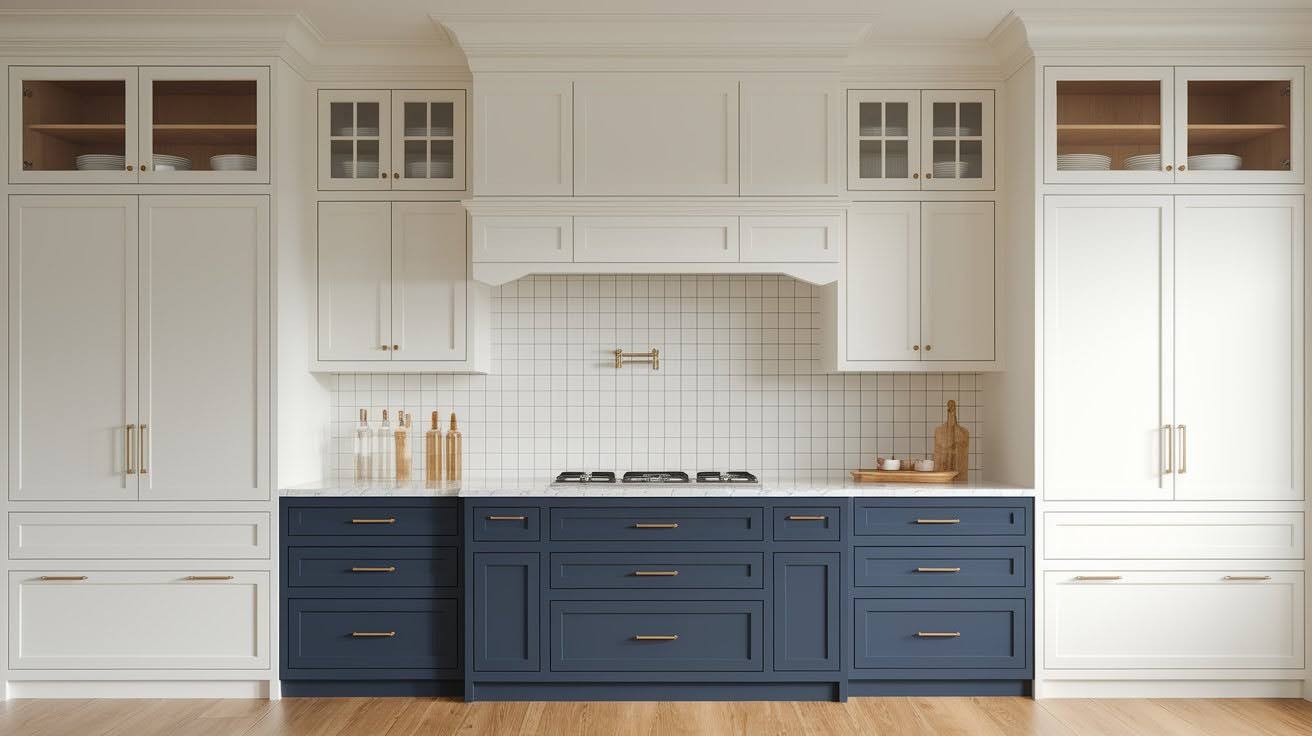
Inset cabinets feature doors that sit flush inside the cabinet frame, creating a seamless and refined appearance.
This high-end option requires skilled construction techniques to achieve proper fit and function.
The precision craftsmanship results in tight reveals and consistent gaps around all door edges. Inset construction works well with both traditional and contemporary styles.
The additional labor involved makes these cabinets more expensive than overlay alternatives.
9. Glass-Front Cabinets
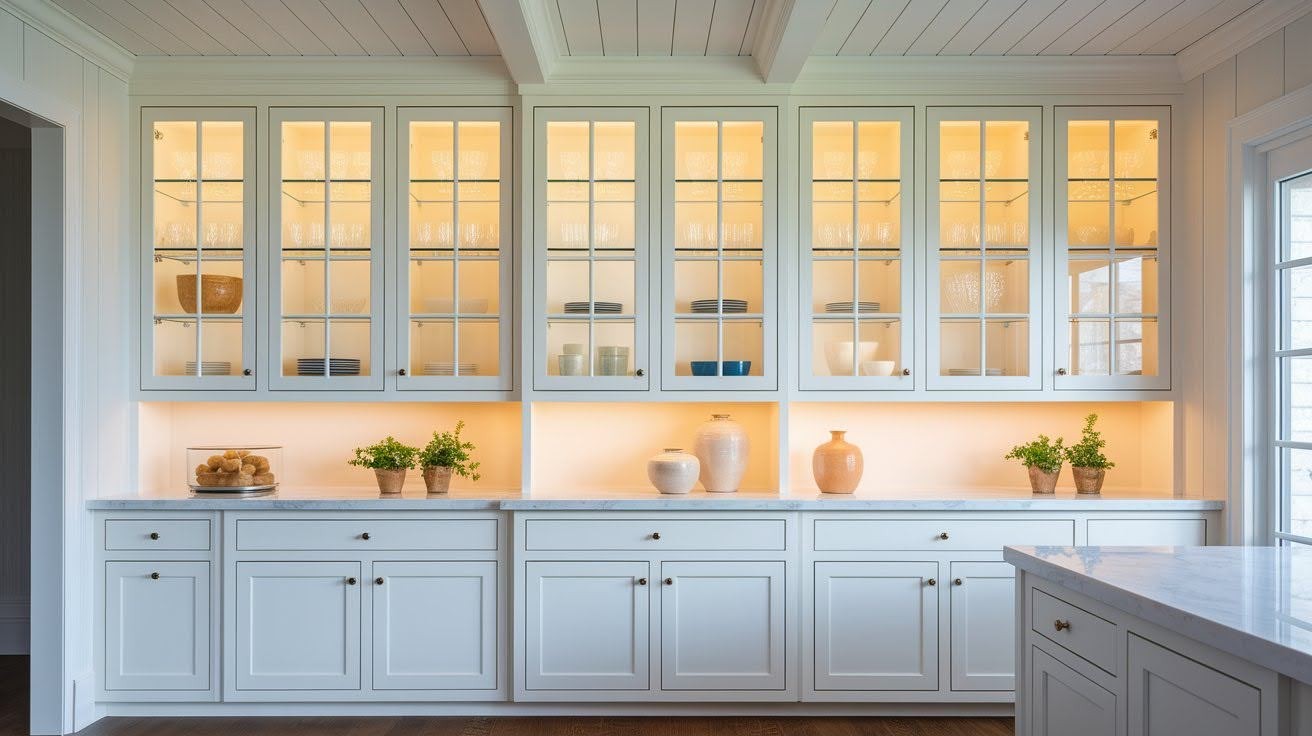
Glass-front cabinets allow you to showcase dishes, decorative items, or barware while protecting them from dust and grease.
These units add visual lightness to kitchens and built-ins by creating the illusion of more space.
Different glass types include clear, frosted, seeded, or textured options that provide varying levels of visibility.
Interior lighting can enhance the display effect while creating ambient lighting for the room. Glass-front cabinets work best when contents are organized and visually appealing.
10. Open Shelving
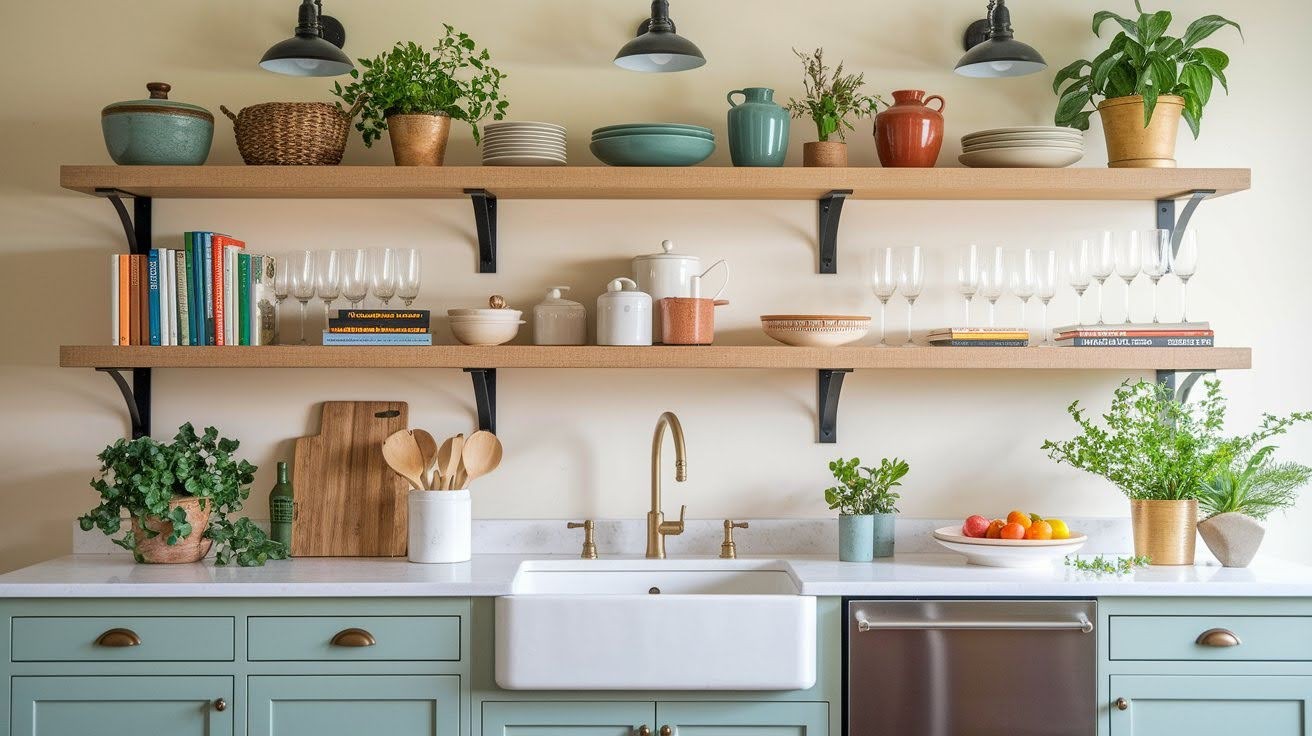
Open shelving replaces upper cabinets or complements them to create accessible storage for everyday items and curated decorative pieces.
This approach works well for displaying colorful dishes, plants, or frequently used ingredients.
Open shelves require more maintenance than closed cabinets since contents are exposed to dust and cooking residue.
The lack of doors creates a more casual, lived-in feel that suits farmhouse and industrial design styles. Proper styling becomes important since contents remain visible at all times.
11. Custom Cabinets
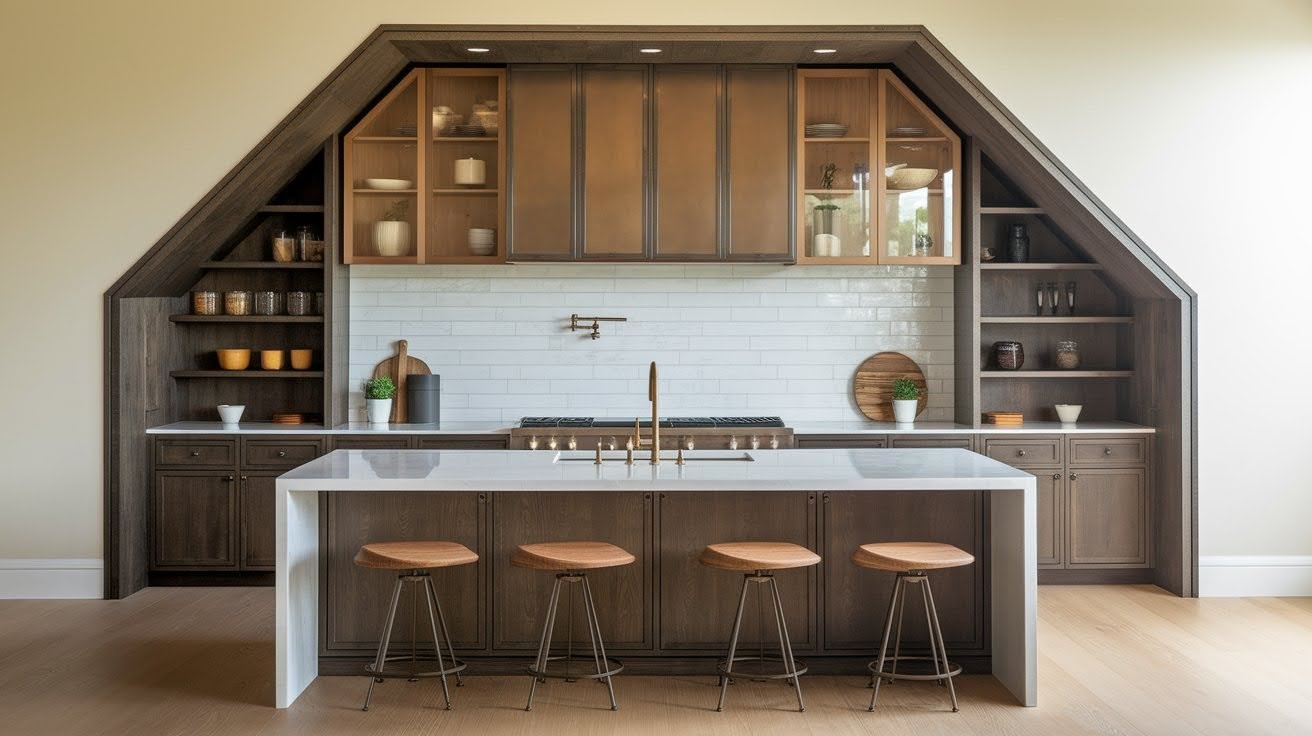
Custom cabinets are designed and built to fit any space, size, or layout requirement.
These bespoke solutions work well for unconventional spaces or homeowners with specific design preferences.
Custom work allows for unique storage solutions, special finishes, and personalized hardware selections.
The process typically involves detailed measurements, design consultations, and skilled craftsmanship.
While more expensive than stock options, custom cabinets offer the perfect fit and exactly the features you need for your specific space and lifestyle.
Tips for Choosing the Right Cabinets
- Start by considering function before focusing on appearance, as your storage needs should guide every decision throughout the selection process
- Think about your cooking habits, family size, and daily lifestyle routines that will impact how you use your space
- Match cabinet types to each room’s specific requirements – tall cabinets work best in pantries, base cabinets suit bathroom vanities, and wall cabinets excel where floor area is limited
- Consider mixing cabinet styles to create depth and visual interest by combining open shelving with glass-front units or shaker-style doors
- Stock cabinets offer the fastest installation and most budget-friendly pricing, typically available within weeks
- Semi-custom options provide a balanced approach with more size and finish choices while maintaining reasonable costs and timelines
- Custom cabinets take the longest to produce but offer unlimited design possibilities and perfect fit for any space configuration
Conclusion
Selecting the appropriate cabinet types can enhance not just storage capacity, but the entire character and functionality of your home.
From timeless Shaker cabinets that work across multiple design styles to space-smart tall pantries that maximize vertical storage, plus custom masterpieces that fit perfectly into unique spaces, there’s a solution for every need and preference.
Each cabinet type offers distinct advantages that can address specific challenges in your kitchen, bathroom, or laundry room.
Ready to revamp your space? Use this comprehensive guide to mix and match the 11 types of cabinets that align with your home’s layout and your lifestyle requirements.
The right combination will create both beautiful and functional spaces.
Frequently Asked Questions
What are the most popular cabinet types for kitchens?
Shaker cabinets remain the most popular choice due to their timeless design and versatility across different styles. Base cabinets and wall cabinets form the foundation of most kitchen layouts, providing essential storage and counter support.
How do I choose between stock, semi-custom, and custom cabinets?
Stock cabinets offer the fastest installation and lowest cost, while semi-custom provides more options with moderate pricing. Custom cabinets take longer but offer unlimited design possibilities and perfect fit for unique spaces.
Can I mix different cabinet styles in the same room?
Yes, mixing cabinet styles creates visual interest and allows for varied functionality throughout your space. Popular combinations include pairing Shaker doors with glass-front units or adding open shelving to traditional closed cabinets.
What’s the difference between inset and overlay cabinet doors?
Inset doors sit flush inside the cabinet frame, creating a seamless appearance but requiring precise craftsmanship. Overlay doors sit on top of the frame, offering easier installation and lower costs while still providing attractive results.
How tall should my cabinets be for maximum storage?
Standard wall cabinets measure 30-42 inches tall, but extending to the ceiling maximizes storage capacity. Tall pantry cabinets typically range from 84-96 inches, providing substantial vertical storage for food and supplies.

